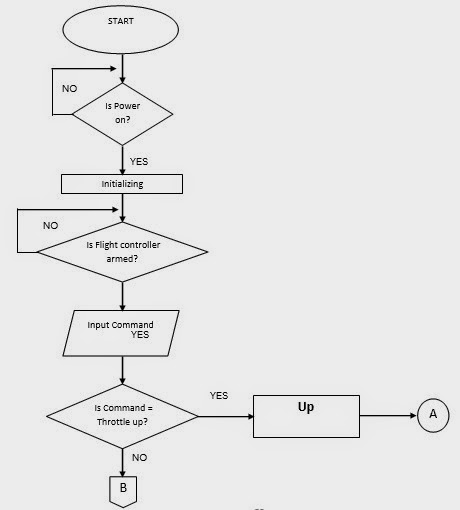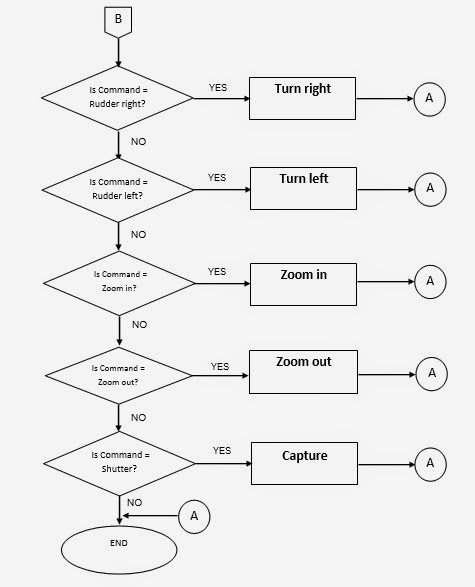The article of Dacanay (2013) entitled “Diver finds Guam-based US drone in Masbate” mentioned that a drone, diver and local fishermen found off central Philippines originated from Guam, and was used during a military exercise held there in 2012. The two countries signed the Visiting Forces Agreement (VFA) which was ratified by Congress in 1998. It has served as a guideline for the renewal of US-Philippine joint war games that began in 2000. In this article the proponents created and designed a prototype like this aerial drones not only for military purpose but for search and rescue also. This statement tells that those kind of aerial drone is very useful
According to Reuters (2013) in the article entitled “MANILA, Philippines - Naval forces from the Philippines and US held joint exercises on Friday”, there are two sides shared techniques in sea reconnaissance that could come in handy as Manila shores up its capabilities to patrol its maritime territories. The joint naval exercises, now in its 19th year, are aimed at improving cooperation between the two allies in maintaining regional maritime security, addressing trafficking and smuggling, and responding to disasters.
Around 200 Filipino and 600 U.S. personnel joined the annual Cooperation, Afloat, Readiness and Training (CARAT). US forces demonstrated the use of their unmanned aerial system, which can be used for sea surveillance and convoy, and tracking target positions. They said a similar system was used before in helping to capture a leader from the extremist Abu Sayyaf Group. The Kevlar radio-controlled plane, weighing 6 kilos, can fly up to 10,000 feet at a speed of 40 nautical miles. Images taken by a camera inside the unit can be monitored by squadron members on the boat. It is also capable of capturing infrared images. In this article it gives us a more interest to design and build an aerial reconnaissance robot not just for military use but it can be used as a tool to save life for search and rescue, to know how much the damage done by a disaster and can be an bird’s eye view. The aerial robot has many more possible uses.
In 2013, Pascual in his article entitled “Up in the sky, look! It’s a bird. It’s a plane. It’s IteraRobota!” specified that the IteraRobota is a self-directed aircraft which provides aerial surveillance of terrains. What seems like an oversized robot-toy is actually equipped with lenses, sensors, and other devices that function altogether to survey the environment, specifically agricultural plantations mid-air.IteraRobota makes possible to capture a top-view perspective of a certain place at a certain time. One of the creators of this technology, Dr. Vladimir Y. Mariano of the Institute of Mathematical Sciences and Physics at the University of the Philippines Los Baños shared that just as a doctor diagnoses a person from head to foot, IteraRobota works in the same way in monitoring and identifying problems that can be found in a target land area. It was developed to come up with a quick way of assessing terrains. The technology is able to provide not just aerial images of the terrain but also ground data on water vapour, rainfall rate, and cloud motion which are used to monitor agriculture, forestry, and the environment. The technology is aimed to help its stakeholders arrive at better decisions for the agriculture and the environment from efficient and reliable data. As of now, IteraRobota is already dealing with its potential stakeholders such as International Rice Research Institute (IRRI), Philippine Council for Agriculture, Aquatic and Natural Resources Research and Development (PCAARD), Del Monte Philippines, and Philex Mining Corporation for partnerships.
According to Philippine Information Agency (2013) the Department of Environment and Natural Resources (DENR) in Caraga Region is using a prototype Unmanned Aerial Vehicle (UAV) technology popularly known as “drone” developed by Filipino scientists and engineers in an effort to closely monitor the activities and movement of illegal logging operations in the remote mountain villages of the region. SKYEYE, the operator of the UAV gave a complete briefing of the UAV operations to PENRO Roberto Oliveros in Agusan del Sur and PENRO Merlinda R. Manila in Surigao del Sur at the DENR Regional Office in the presence of the Regional Executive Director Nonito M. Tamayo and RTD Ocampo on Tuesday in a move to have a better understanding of the technology. It stated that UAV technology is expected to minimize the high risk of lives among the DENR personnel engaged in anti-illegal logging campaign at the front lines. This article will see that even the Philippines has to catch up a little in the UAV technology, that it is used by some government department to protect the area that they are responsible for. Robotics is getting popular nowadays and the young ones are driven by curiosity to do more and do best for the country and to the world.
As suggested by President Benigno Aquino, the Philippines has to deploy US spy planes as an option to monitor the country’s territory, as China appealed for stability in the region. In an embassy statement quoting spokesman Liu Weimin, called on all parties to maintain “peace and stability” in the South China Sea. (Agence France-Presse, 2012).
Based from the statement, the hope of the Chinese side that peace and stability can be maintained and parties concerned can do things conducive to regional peace and stability. It did not specify the Philippines or the United States or mention the three-month long dispute between China and the Philippines over the Scarborough Shoal in the South China Sea. The dispute began after Chinese government vessels blocked Philippine ships from arresting Chinese fishermen near the shoal April 10. The shoal sits about 140 miles (230 kilometers) from the western coast of the Philippines’ main island of Luzon. The nearest major Chinese land mass is 1,200 kilometers northwest of the shoal, according to Philippine Navy maps.









